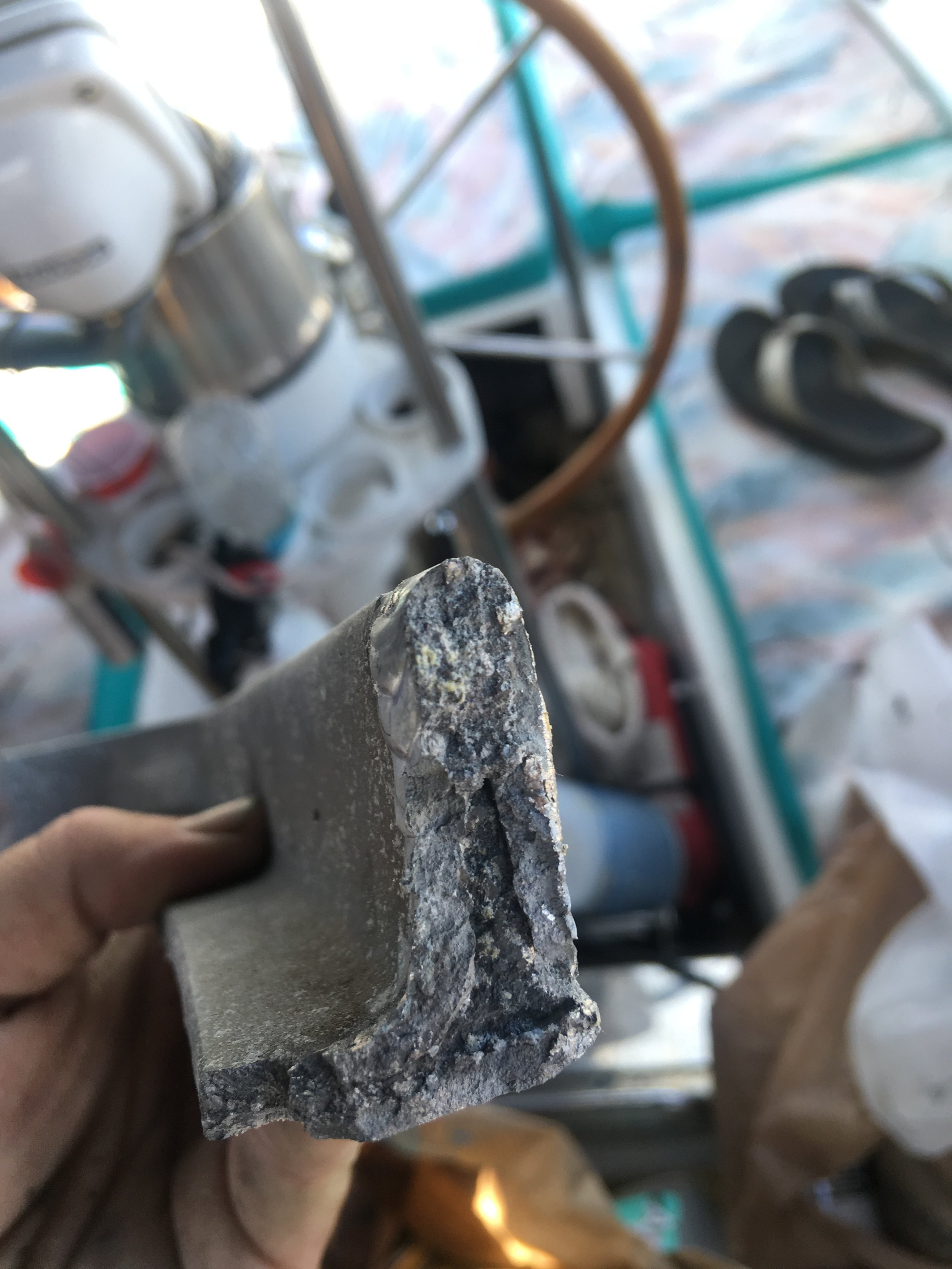A few months ago, it was shattered while we were towed off a shocking in North Carolina. The pieces of the quadrant were then welded back together, though this was more of a patch than a fix.
Cast aluminum doesn't weld well, so this shouldn't be thought of as a permanent fix. That being said, we sailed over 400 miles of blue water with it before it shattered again. Again, it shattered as we were being pulled off a beach on the coast of Florida.
The patch worked very well, but it shattered on the welds (and one new place) this time, so we knew it was time to replace the entire unit with a stronger material: Bronze.
Bronze is preferable over aluminum in a boat because it is stronger, corrosion resistant, and less likely to break. The biggest downside is the weight of the unit. The aluminum quadrant was only a few pounds while the bronze unit weighs almost 22 pounds (10kg)!
Since bronze is so much stronger, it doesn't need the middle spoke that the aluminum quadrant required. If severely punished, the bronze quadrant would wrack or bend, rather than shatter into pieces. This will mean that your steering will be a bit off, but still operational.
The choice to switch to bronze was simple, but the costs were not. A bronze quadrant will set you back hundreds of dollars! Ours cost a wee bit over $700.
Hopefully, with better watch keeping and deeper cruising waters, we won't have to torture test the new quadrant like we did the old quadrant.






